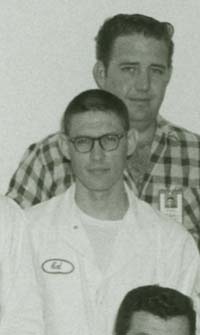
Edward Campbell
Floresville, Texas
April 11 2003
Matthew Hoyt
Palo Alto College
Hist: 1302 - Spring 2003
|
|
INTRODUCTION Edward Campbell was born in Sweetwater, Texas on
May 23, 1938. He was an only child and has lived in Texas his whole life.
Edward grew up on cotton farm in Hobbes. He joined the Air Force in
1956, where he was a
B-52 crew chief for eight years and served on on medium and heavy bombers
which traveled as far as Guam. In February of that
same year he married his first wife Barbara Barfield. They had two sons, Edward Jr.
and Ronald. In 1964 he went to work for NASA as an astronaut test subject
for the Apollo Space Program. In 1970 he left
NASA and went to work as an
instrument tech at an oil refinery. In 1984 his wife Barbara passed
away. He remarried in 1988 to Mary Aeiker. He currently works at the Home Depot
with me in the electrical department. Edward now enjoys a peaceful and
quiet life on his farm in St. Hedwig. I interviewed Mr. Campbell at Maverick's Restaurant in Floresville. TRANSCRIPTION
I was an astronaut test subject for the Apollo Space Program.

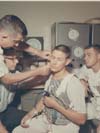

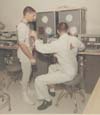
Did you get to meet any famous astronauts?
Yeah, I got to meet all of them. They were everyday work
companions.
What were they like?
They were fighter pilots; they were test pilots; they were
cocky little guys and I do mean cocky. Some of the were very nice and some
of them were the pits.
What was the technology like back then?
All of our stuff was a lot bigger than it is now. You
know like a computer, a play station has got more memory than our whole first
space craft had. Our computer in our department covered our entire second
floor, about 30 feet wide and a 100 foot long. It ran off of data cards
about the size of our pay checks. They had holes punched in them like in
the old movies.
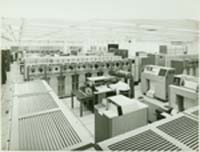
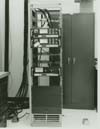
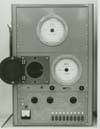
Did you test any kind of weapons?
Nope, no weaponry whatsoever, it was all space exploration,
we were just trying to get to the moon.
Do you remember the Sputnik?
When the
Sputnik came out, that was what made us go for the
moon. They (the Soviet Union) put up the Sputnik and I then I think they put up the dog, the
Russians. They put up a man first I believe, and then we got on the stick
and got to the moon first. They don't tell you about it, but the Russians
lost a lot of people, they had hard landings, parachute landings.
You weren't going up in the space shuttles like we have now, right?
Right, we went up in little bells, the Apollo Space Craft and
Mercury. Lord, the in the Mercury you were just one man down in that
sucker. It was like a big bell.
Were there any weird things that you tested that never made it?
We tested a lot, we tested for transportation. They
didn't know how we were going to get around on the moon, and we had some guys
that were motorcycle enthusiasts and they said let's try a motorcycle. So
they put a guy in a space suit and put him on the motorcycle and then they turn
the motorcycle right upside down. The space suit was too back-heavy so
they scrubbed that idea.
Did you ever get to drive that little car they took up?
No I didn't, but I was around it all the time. I never
got in it or drove it around. See we had a lunar surface that we would go
out to and walk around in it and shovel and use the little drills and all.
In fact when I went there, there was very little down there. I went to
work in Building 32 and the chamber that I went to work in was 10 stories high
and 10 stories below, and the door was 40 feet high.
ANALYSIS
I learned a lot from doing this interview. I learned that history comes from the stories that are told and if you don't ask you will never know. I also learned that history is not an exact science. I learned a great deal more about Edward through this interviewing process than I would have ever learned in social interactions at work. All of his stories about working for NASA and the space race were very interesting. His photo album/scrapbook was great and the photos on this site are from his scrapbook. I think this is a great way to get up close and personal with history. I also got a feeling for how dangerous and exciting it must have been working for NASA in that period of time. NASA was new and space exploration and the moon was on everyone's mind.
ANNOTATED BIBLIOGRAPHY
Steve Garber, NASA History web curator.
NASA History Office. Office of
External Relations. February 21, 2003. This web site is an official
NASA web site. It provides just anything you might need to know about the
history of NASA. It includes photos and biographies on NASA's space crafts and
personnel. Office of the Secretary of Air Force (Public Affairs).
Air Force Link. This web
site provides news and history of the United States Air Force. It also
provides photographs and fact sheets on most of our weapons and planes.